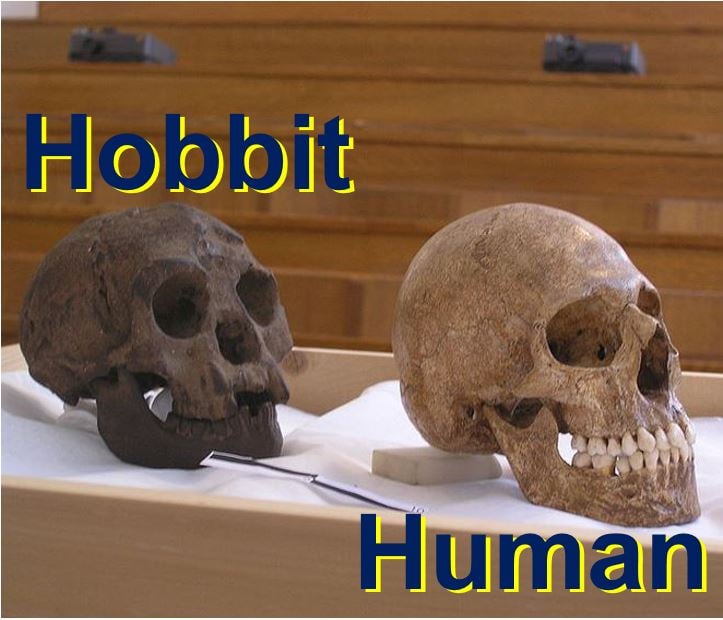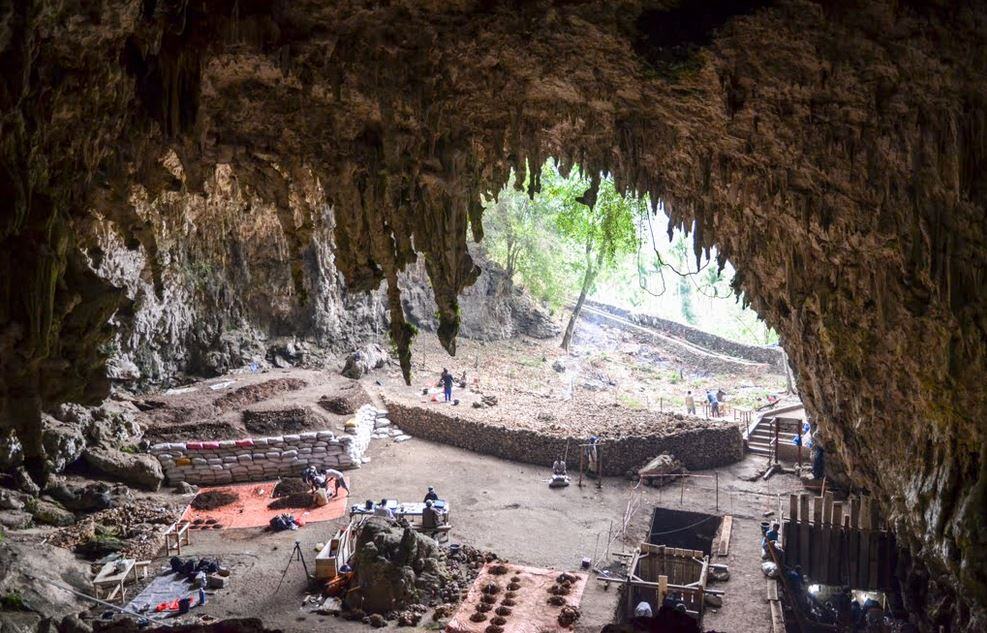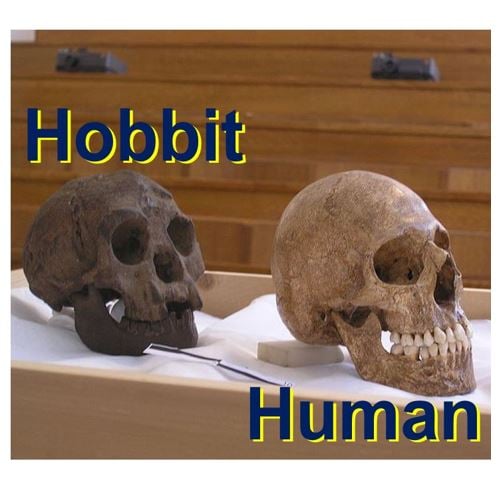The skull of a Hobbit like creature that people thought was a very short type of homo was probably not human at all, say French bone experts who carried out a new analysis – the specimen belonged to another species, they suggest.
In 2003, the skeletal remains of nine creatures who looked very much like humans were unearthed in the Indonesian island of Flores.
Paleoanthropologists said they believed they came from a previously unknown hominin species Homo floresiensis. They were informally named Hobbits and were said to have been about 3.3 ft (1 metre) tall.
 A cast of Liang Bua’s skull (left) was compared to several microcephalic skulls, such as the one on the right. (Image: Wikipedia)
A cast of Liang Bua’s skull (left) was compared to several microcephalic skulls, such as the one on the right. (Image: Wikipedia)
Experts unable to agree on Hobbit species
The bones sparked a debate among experts. Some believed they were small humans who had diverged and shrank due to isolation. ‘Island-dwarfing’ is a phenomenon seen in some species, such as dwarf elephants observed in a number of islands.
In fact, the island of Flores was once home to a race of extinct, tiny elephant-like animals called Stegodon.
Several studies suggested that Homo floresiensis was not human at all, while other experts believed they were Hobbit-like creatures who were human, but suffered from microencephaly, a condition in which the baby is born with a small head – pregnant women today who become infected with the Zika virus have a greater risk of giving birth to a baby with microencephaly.
Dwarf cretinism, which is sometimes caused by a lack of iodine, has also been considered as a reason for their short height.
In this latest study, which will soon be published in the Journal of Human Evolution, Antoine Balzeau of France’s Natural History Museum, and Philippe Charlier, a palaeopathologist at Paris-Descartes University, specialised in solving ancient medical mysteries, carried out tests on the skull of one of the Hobbit-like creatures nicknamed Liang Bua (same name as the cave – also called the ‘Hobbit Cave’ – where it was found).
 The ‘Hobbit Cave’ in the island of Flores where the bone specimens belonging to ultra-short human-like creatures were discovered. (Image: panoramio.com)
The ‘Hobbit Cave’ in the island of Flores where the bone specimens belonging to ultra-short human-like creatures were discovered. (Image: panoramio.com)
They chose Liang Bua’s skull because it was the most intact of all the bone specimens.
According to abc.net.au, the latest analysis shows that the skull displays none of the unique traits of skulls of the genus Homo, i.e. it has none of the characteristics found in human skulls – it does not appear to be human.
The scientists emphasized that they were not ruling out membership of our species. Their findings put forward a suggestion rather than compelling and conclusive proof that the Flores creatures that existed 18,000 years ago were not human at all.
Mr. Balzeau said:
“So far, we have been basing our conclusions on images where you don’t really see very much.” While he believes the Flores creatures were not human, Balzeau said “For the moment, we can’t say one way or the other.”
 Homo floresiensis was considerably shorter than modern humans, and had much smaller bones. Bottom right – modern human foot skeleton, Top right – Homo floresiensis foot skeleton. (Images: 1. Human and Homo floresiensis adult females- ancient-origins.net. 2. Foot skeletons – bradshawfoundation.com)
Homo floresiensis was considerably shorter than modern humans, and had much smaller bones. Bottom right – modern human foot skeleton, Top right – Homo floresiensis foot skeleton. (Images: 1. Human and Homo floresiensis adult females- ancient-origins.net. 2. Foot skeletons – bradshawfoundation.com)
Flores not only place with Hobbit bones
Bone specimens were also found in the Indonesian island of Sulawesi, which archaeologists say were Hobbit-like creatures who existed more than 100,000 years ago, sixty thousand years earlier than previous estimates.
The scientists believe that – like in Flores – fossils of pre-modern humans may yet be unearthed on Sulawesi.
Study leader Dr. Gerrit van den Bergh said:
“It now seems that before modern humans entered the island, there might have been pre-modern hominins on Sulawesi at a much earlier stage. Sulawesi, like Flores, could have been a natural laboratory for human evolution under isolated conditions,” Dr van den Bergh explained.”
Homo Floresiensis Facial Approximation Complete
Three years ago, facial anthropologist Dr. Susan Hayes released her recreations of the face of Homo Floresiensis, a primitive hominin discovered on the island of Flores.

